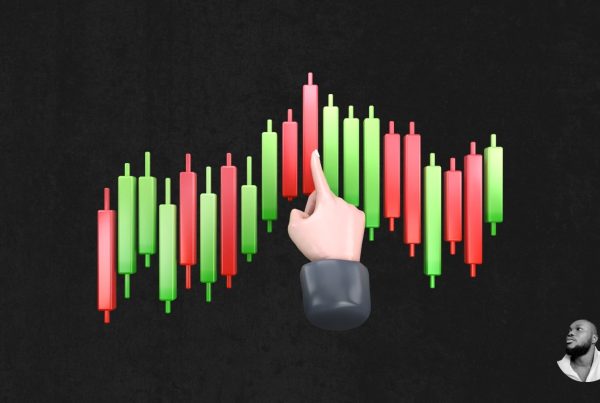How to Verify a Token Contract
In the rapidly evolving world of cryptocurrency, ensuring the legitimacy of a token contract is crucial for investors and developers alike. With the rise of decentralized finance (DeFi) and non-fungible tokens (NFTs), the need for robust verification processes has never been more pressing. This comprehensive guide will walk you through the steps to verify a token contract, the tools available, and the importance of due diligence in the crypto space.
Understanding Token Contracts
A token contract is a smart contract that governs the creation, distribution, and management of a cryptocurrency token on a blockchain. These contracts define the rules for how tokens can be transferred, how many tokens exist, and other essential functionalities. Verifying a token contract ensures that it operates as intended and protects investors from potential scams.
Why Verify a Token Contract?
Verifying a token contract is essential for several reasons:
- Security: Ensures that the contract is free from vulnerabilities that could be exploited.
- Transparency: Provides insight into the token’s functionality and governance.
- Trust: Builds confidence among investors and users, fostering a healthy ecosystem.
- Compliance: Helps ensure that the token adheres to regulatory standards.
Steps to Verify a Token Contract
1. Identify the Token Contract Address
The first step in verifying a token contract is to obtain the contract address. This address is a unique identifier for the token on the blockchain. You can usually find it on the project’s official website or their social media channels. Always ensure that you are using the official sources to avoid phishing scams.
2. Use Blockchain Explorers
Blockchain explorers are tools that allow you to view transactions and contract details on a blockchain. Popular explorers include:
- Etherscan for Ethereum-based tokens.
- BscScan for Binance Smart Chain tokens.
- Polygonscan for Polygon tokens.
To verify a token contract using a blockchain explorer, enter the contract address in the search bar. This will provide you with details such as the contract’s creation date, transaction history, and the number of holders.

3. Review the Contract Code
Once you have accessed the contract details, the next step is to review the contract code. Most blockchain explorers allow you to view the source code of the contract. Look for the following:
- Functionality: Ensure that the functions defined in the contract align with the token’s intended use.
- Security Features: Check for common security practices, such as ownership control and emergency withdrawal functions.
- Audit Reports: Look for any third-party audit reports that verify the contract’s security.
4. Check for Verified Contracts
Many blockchain explorers provide a verification feature that indicates whether a contract has been verified. A verified contract means that the source code has been published and matches the deployed bytecode on the blockchain. This adds an extra layer of trust.
5. Analyze Tokenomics
Understanding the tokenomics of a project is vital. Tokenomics refers to the economic model of the token, including its supply, distribution, and utility. Key aspects to consider include:
- Total Supply: The maximum number of tokens that will ever exist.
- Circulating Supply: The number of tokens currently in circulation.
- Distribution: How tokens are allocated among team members, investors, and the community.
Analyzing tokenomics can help you assess the potential for price appreciation and the overall health of the project.
6. Community and Developer Engagement
A strong community and active developer engagement are indicators of a project’s legitimacy. Check platforms like Twitter, Discord, and Reddit for discussions about the token. Look for:
- Community Feedback: Positive feedback from users can indicate a trustworthy project.
- Developer Activity: Regular updates and communication from developers show commitment to the project.
7. Look for Third-Party Audits
Third-party audits are conducted by independent firms to assess the security and functionality of a token contract. A reputable project will often have its contract audited by firms like Certik or OpenZeppelin. Check for:
- Audit Reports: Review the findings of the audit to understand any vulnerabilities.
- Remediation: Ensure that any identified issues have been addressed by the development team.
Common Red Flags to Watch For
While verifying a token contract, be on the lookout for common red flags that may indicate a scam or fraudulent project:
- Anonymous Team: Lack of transparency about the team behind the project can be a warning sign.
- Unrealistic Promises: Be cautious of projects that promise guaranteed returns or unrealistic growth.
- High Token Supply: Excessive token supply can lead to inflation and devalue your investment.
- No Community Engagement: A lack of community interaction may indicate a lack of interest or support for the project.
Case Studies: Successful Token Verification
Several projects have successfully navigated the verification process, establishing themselves as trustworthy in the crypto space. Here are a few notable examples:
1. Chainlink (LINK)
Chainlink is a decentralized oracle network that allows smart contracts to securely interact with real-world data. The project underwent multiple audits and has a transparent team, contributing to its reputation as a reliable token. Its verification process included:
- Thorough audits by reputable firms.
- Active community engagement through social media and forums.
- Clear tokenomics that outline its utility and distribution.
2. Uniswap (UNI)
Uniswap is a leading decentralized exchange that allows users to swap various tokens without intermediaries. The verification of its token contract involved:
- Publicly available source code on GitHub.
- Regular updates and communication from the development team.
- Strong community support and engagement.
Tools for Token Contract Verification
Several tools can assist in the verification process, making it easier for both beginners and experienced users:
- BscScan: For Binance Smart Chain tokens.
- Etherscan: For Ethereum-based tokens.
- Tokenomics.org: For analyzing tokenomics.
- Certik: For third-party audits.
Frequently Asked Questions (FAQs)
What is a token contract?
A token contract is a smart contract that defines the rules and functionalities of a cryptocurrency token on a blockchain.
Why is it important to verify a token contract?
Verifying a token contract helps ensure security, transparency, and trust, protecting investors from potential scams.
How can I find a token contract address?
You can find a token contract address on the project’s official website or social media channels. Always verify the source to avoid scams.
What should I look for in a token contract?
Look for functionality, security features, audit reports, and alignment with the project’s goals.
What are common red flags in token contracts?
Common red flags include an anonymous team, unrealistic promises, high token supply, and lack of community engagement.
Conclusion
Verifying a token contract is a critical step in navigating the cryptocurrency landscape. By following the outlined steps and utilizing available tools, you can protect yourself from scams and make informed investment decisions. Always conduct thorough research and stay updated on industry trends to enhance your understanding of token contracts.
For more insights and updates on cryptocurrency, visit Bitrabo. Follow me on X, Instagram, and Threads for the latest news and trends in the crypto world.
Disclaimer: This article is for informational purposes only and should not be considered financial advice. Always conduct your own research before investing in cryptocurrencies.
The Crypto Watchlist of the Week 🔎
Subscribe to receive expert-curated projects with real potential—plus trends, risks, and insights that matter. Get handpicked crypto projects, deep analysis & market updates delivered to you.


